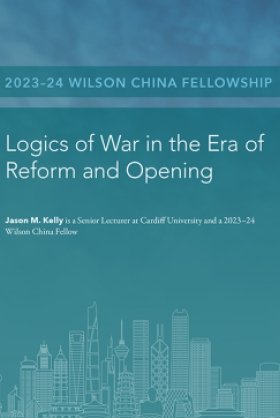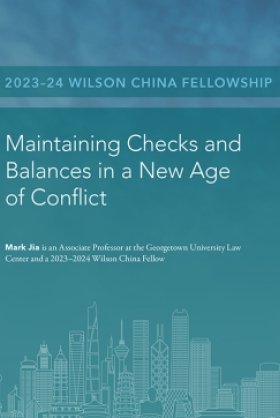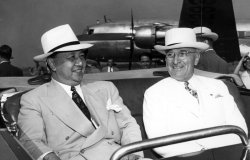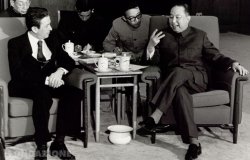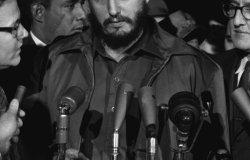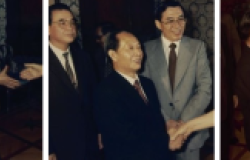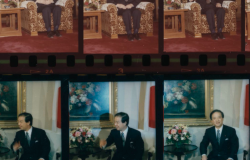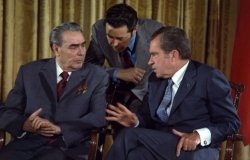The British Royal Air Force: Operations over Laos against the Ho Chi Minh Trail, 1962


To download this Working Paper, please click here.
CWIHP Working Paper 89
The British Royal Air Force: Operations over Laos against the Ho Chi Minh Trail, 1962
Priscilla Roberts
December 2018
Inconclusive rumors that the British Royal Air Force (RAF) flew occasional covert missions in the Vietnam War have circulated for decades, but so far evidence that British aircraft provided anything more than humanitarian relief services, notably by delivering supplies earmarked for refugees, has proved elusive.[1] It seems, however, that in the second half of 1962, in great secrecy a series of such flights took place. These missions were intended to assist with newly initiated US attempts to interdict and shut down the increasingly effective Ho Chi Minh Trail logistical network of roads, paths, and bunkers that transported supplies from communist North Vietnam via Cambodia and Laos to supporters in South Vietnam.
Notes taken in March 2013 from the logbook of the navigator on these operations, Flight Lieutenant Donald Roberts (1929-2014) of 48 Squadron, then based at RAF Station Changi in Singapore, together with his personal recollections, provide some insights into both the extent and limits of British support for the United States in Indochina, at a time when the situation in the region was still decidedly fluid.[2]
Background
The 1954 Geneva Accords, the product of the international conference held in Switzerland in mid-1954 to resolve the conflicts in Indochina, recognized Cambodia and Laos as independent nations. Vietnam was left divided at the 17th Parallel, with a communist government headed by Ho Chi Minh controlling the north, while a non-communist administration led by President Ngo Dinh Diem held power in the south. The southern state became in effect a US client, heavily dependent upon American aid and assistance. Fearing that the communists would win nationwide elections, scheduled for 1956, and so take over all of Vietnam, US officials advised the Diem administration to refuse to allow the South to participate in these. The Northern Viet Minh government embarked on plans to mount a guerrilla campaign with the objective of reuniting Vietnam. From 1958 onward, military supplies were funneled southward to National Liberation Front (Viet Cong) insurgents from the north along a gradually expanded complex of mountain trails and pathways that traversed border territories in neighboring Cambodia and Laos. In 1958-1959, North Vietnam invaded Laos to facilitate the construction of this network. Viet Cong fighters also sought sanctuary by crossing the boundaries into these ostensibly neutral countries.[3]
Within Laos—and ultimately in Cambodia, too—these activities and efforts to counter them proved immensely destabilizing. By the early 1960s, the situation within Laos was fragile in the extreme. Would-be neutralist governments headed by Prince Souvanna Phouma encountered not merely external pressures, but also challenges from both the right-wing military, which staged a coup in 1961, bringing General Phoumi Novasan to power, and the leftist Pathet Lao, which offered significant communist opposition. From May 1961 to July 1962, a second Geneva Conference was held, co-chaired by Great Britain and India, that included representatives from 14 countries, including all three major powers, the Soviet Union, China, and the United States, together with France, Canada, Poland, and Burma, as well as Laos, Cambodia, and both Vietnams. After more than a year of negotiations, in which US Assistant Secretary of State for Far Eastern Affairs W. Averell Harriman played a leading role, as did British diplomats, all agreed that Laos should be neutralized, and once more have a tripartite coalition government headed by Souvanna Phouma, in which the pro-American, pro-communist, and neutralist factions were all represented. The powers that signed the declaration on July 23, 1962, the date it entered into force, all pledged themselves to respect the neutrality of Laos.[4]
Even at the time, it was apparent that for at least some of the signatories, this proclamation meant primarily that they would discreetly restrain and camouflage rather than halt their activities within Laos. To a degree that its communist patrons, China and the Soviet Union, probably did not fully appreciate until later, North Vietnam was determined to continue the struggle to unite both Vietnams until victory was attained. In terms of infiltrating supplies and personnel into South Vietnam, quietly upgrading the Ho Chi Minh trail infrastructure in the Laos borderlands remained a top priority. Viet Cong representatives were, for the most part, far less interested in enabling a Pathet Lao victory, and were prepared to work with any Lao government that tolerated or turned a blind eye to their activities.
On the US side, the administration of President John F. Kennedy engaged in something of a love affair with the concept of counter-insurgency, especially the idea of dispatching irregular units to work with indigenous anti-communist forces. In Laos, a country with a population of approximately 3 million that the French had cobbled together in the post-1945 years out of disparate and ill-assorted elements, the Meo (Hmong) hill tribes concentrated in the mountainous areas traversed by the Ho Chi Minh trail offered an alternative anti-communist grouping that might well prove more effective than the official Royal Lao Army military forces. The Meo, together with other hill tribes, constituted more than half the country’s population. By late 1961, 11,000 Meo were receiving US support, while US training teams were working with both the Meo and the Royal Lao Army.[5] Sir John Addis, the British ambassador to Laos, expressed doubts over the impact of this strategy on Laos, “a country which has never known real unity,” on the grounds that it would undercut “essential” moves toward integration involving efforts to ensure “that the minority tribes should be drawn into the Laotian community and given a share of national consciousness and responsibility.”[6] But with Kennedy, Harriman, and Roger Hilsman, the Director of the State Department’s Bureau of Intelligence and Research and a former Office of Strategic Services guerrilla fighter with Merrill’s Marauders during World War II, all committed to using the Laotian hill tribes to close down the Ho Chi Minh Trail, the British government was not prepared to express any reservations. Whatever misgivings they might privately harbor, British officials would, indeed, facilitate the US approach.
The signature of the Laos agreement went in tandem with initiatives by the United States to strengthen and reinforce its position in Southeast Asia. In South Vietnam, Kennedy boosted counterinsurgency efforts and increased the number of US advisers in the country from 700 to 12,000. Following a successful Pathet Lao and Viet Cong attack on the northern provincial Lao capital of Nam Tha in early May 1962, the United States persuaded the nervous government of neighboring Thailand, a member—together with the Philippines, Pakistan, Australia, New Zealand, France, Britain, and the United States—of the US-backed Southeast Asian Treaty Organization (SEATO), to request assistance from its alliance partners, as evidence of their support. Since 1961 the Thais, who had backed Phoumi’s military government, had argued that as it stood SEATO, lacking any formal military forces or guarantees, was inadequate—to quote Thai Foreign Minister Thanat Khoman, an “ineffective and unreliable” security arrangement.[7]
In May 1962, around 1,000 US troops who had just participated in joint SEATO “Cobra” military exercises were already present in northern Thailand. In mid-May 1962, the United States deployed an additional Marine Battalion Landing Team and two air squadrons, one from the Air Force and one attached to the Marines, an extra 1,800 men in all. By the end of the month, total US forces in Thailand had risen to between 5,000 and 6,000, located in areas close to those regions of Laos where Pathet Lao units were operating. The United States asked other SEATO nations, including Australia, New Zealand, and the United Kingdom, to send token forces as a tangible display of solidarity that would boost Thai morale. Kennedy wished to see “as many SEATO flags in Thailand as possible.” Ironically, when the British offered to send back a Hunter fighter squadron that had taken part in the Cobra exercises, the Thais were unenthusiastic, and it took US pressure to make them accept.[8]
The Aftermath of the Geneva Accords
Following the signing of the Neutralization Agreement on July 23, 1962, the United States withdrew the 1,200 American and third-country personnel of its Military Advisory Assistance Group from Laos, an exercise completed in early October 1962. US officials, including President Kennedy, Harriman, and Hilsman, wished to ensure that, should the Laos agreement collapse, the blame would not fall on the United States.[9] In practice, this did not mean the cessation of all US-backed operations in Laos, especially its efforts to mobilize the hill tribes against the Pathet Lao and the Viet Minh. In July 1962, Harriman permitted the US Central Intelligence Agency (CIA) to retain a mere two paramilitary officers in Laos. He made it clear to William Colby, head of the CIA’s Far East Division, that he expected full weekly briefings on CIA activities in Laos and Southeast Asia. As the reports of a continuing active North Vietnamese military presence in Laos became more ominous and convincing, Harriman relented and permitted Air America to resupply the Hmong with food and ammunition, albeit in secret. Military training operations for the Hmong in Thailand were also quietly continued.[10] In late July 1962, during a Souvanna Phouma visit to Washington, Kennedy also extended extensive economic aid to the new Lao government, which received 85 percent of its total revenues from US assistance programs.[11]
US reconnaissance operations to discover whether North Vietnamese forces were genuinely complying with the Geneva agreement and leaving Laos became more problematic, after a supersonic F-101 Voodoo fighter flying a low level surveillance mission at eight thousand feet over the Plaine des Jarres was hit by Pathet Lao anti-aircraft fire on August 14, 1962. Although the pilot managed to avoid crashing the jet and made an emergency landing at Don Muang Air Base in Thailand, US Ambassador to Laos Leonard Unger wished to cease all such overflights of Laos, unless the Lao government gave specific permission for these. Harriman duly recommended that the United States should end “all covert flights over Laos.” Since they continued at the rate of two or three per day, albeit at high altitudes, until at least November 1962, it seems that in this case, his advice was disregarded.[12]
The use of British aircraft to fly missions over Laos—including the delivery of New Zealand SAS personnel—suggests that, in the interests of maintaining good relations with the United States, their country’s ally, partner, and patron, top British officials were equally willing quietly to contravene the recent Neutralization Agreement. As Nicholas Tarling and Matthew Jones have pointed out, despite differences over some specifics of policy, on a wide range of issues the British sought to maintain a special relationship with the United States; to ensure that their partner and ally had a continuing commitment to Southeast Asia; and to influence and sometimes moderate the US approach to that area. From the prime minister down, British officials were conscious that their country did not possess unlimited resources for defense, constraints that likewise led them to place a high value on the encouragement of regional stability.[13] In mid-August 1962, Kennedy bluntly suggested to some of his top advisers, including Harriman and Michael V. Forrestal of the National Security Council, plus several economic officials, that Britain and France, as the countries that had pushed hardest for neutralization, should provide substantially more financial aid to Laos, since “Souvanna is their protégé.”[14] Providing a delivery service in hazardous conditions was one way of blunting such demands.
The British also had their own interests in Asia to consider, particularly the status of Hong Kong, a territory that they would continue to administer until 1997, but where their position depended in large part on the tacit acquiescence of the People’s Republic of China, and to some extent on implicit support from the United States.[15] Well before Henry Kissinger developed the concept of linkage, the British were perfectly familiar with the pragmatic reality. To satisfy the demands and expectations of their far more powerful partner, where possible British officials would make conciliatory gestures to the United States, offering relatively minor concessions to demonstrate good will, even if they believed these likely to have little practical effect. In July 1961, for example, Prime Minister Harold Macmillan and his cabinet authorized the dispatch to beleaguered South Vietnam of a small British Advisory Mission, headed by Sir Robert Thompson, renowned for his successful use of counterinsurgency tactics to defeat communist rebels during the Malayan Insurgency of the late 1940s and 1950s. Unfortunately, the “strategic hamlets” program introduced in South Vietnam, at least partly on Thompson’s advice, proved far less effective than similar measures had in Malaya.[16]
The missions that British aircraft flew on behalf of the United States in the second half of 1962 were probably part of the overall British effort to facilitate the conclusion and if feasible the successful implementation of the Laos Neutralization Agreement, while promoting good relations with the United States. They may also have been part of the overall show of strength by SEATO, to demonstrate its commitment to the defense of neighboring Thailand.
British Missions over Laos, July-November 1962
By the early 1960s, the fact that the CIA was running its own airline flying supposedly covert missions in Southeast Asia was pretty much an open secret, at least among air crew active in the region. Then and later, purportedly neutral Laos was a particular focus of interest for such ventures.[17] For some months from March to August 1961, US Marine airplanes and personnel were temporarily deployed at Udorn Thani air base in Thailand, to provide support and maintain Air America helicopters involved in anti-Viet Cong and anti-Pathet Lao campaigns in Laos. While these undertakings were not strictly secret, those involved were strongly discouraged from publicizing information about them, and instructed by superiors that the only information they could offer was “No comment.”[18]
British missions over Laos would have been equally sensitive, and perhaps even more so, since they took place after the signing of the Laos neutralization accords, to which the United Kingdom was a party. According to my father’s recollection, the reason that American officials requested the British to undertake these flights was that, at this juncture, the fleet run by Air America and the Central Intelligence Agency included helicopters and single- and twin-engine aircraft but no four-engine airplanes. Flying missions over the rugged mountains of Laos would be particularly hazardous in twin-engine airplanes, because if one engine should develop problems, the other would lack the power to maintain the necessary altitude, and all on board were in danger of a crash in which they might well be killed. The hazards were real. On an early US-backed covert mission intended to insert into North Vietnam a team of guerrilla operatives christened “Atlas,” the aircraft—apparently an Air America helicopter—involved crashed on March 12, 1962, probably hit by anti-aircraft fire, with some of those on board captured and eventually put on trial in North Vietnam.[19] Losing an aircraft in these circumstances carried the further risk of compromising the Laos Neutralization Agreement, should other parties involved wish to make an issue of these flights. The United States government therefore decided to ask the British, who had a number of 4-engine Handley Page Hastings transport aircraft in Royal Air Force Squadron 48, based at RAF Changi in Singapore, to fly several missions over Laos from Thailand, delivering military personnel and matériel to assist the hill tribes in the secret war then already in progress. From a purely self-interested perspective, should a British military aircraft be lost over Laos, the onus of explaining why it was there in the first place would fall upon the government of the United Kingdom rather than that of the United States.
This was a relatively brief episode in western air operations over Laos. According to my father, towards the end of 1962 Air America took over these missions on behalf of the United States. In one respect, his recollections were apparently inaccurate. According to his account, by late 1962 Air America had acquired some four-engined aircraft, which meant that they no longer needed to rely on the British Handley Page Hastings. The historian John Prados, by contrast, has told me that in Laos, Air America always relied entirely upon single- and twin-engined planes for all its flights, including those into the Lao uplands. Prados suggests that, if the United States did employ British aircraft and crews for these particular missions, there must have been some other reason for this, such as “hauling capacity, or specifically the British nationality.”[20] It is possible, of course, that the Americans were not completely truthful with their British counterparts as to the reasons why they first requested British assistance. More documentary evidence would be very useful. When these missions ceased, the British fliers were apparently further told that the Americans had eventually decided to handle these flights themselves, partly because they fundamentally preferred running these operations independently, thereby remaining fully in charge of them, and partly because the British military needed all their Singapore-based aircraft to deal with the Brunei Revolt, which blew up in December 1962. The Americans wished to award all the British aviators involved the Distinguished Flying Cross, but the British government vetoed the suggestion, since awkward questions might be asked as to just what these fliers had done to deserve an American medal.
The British aviators involved were ordered to maintain complete secrecy about these missions, and warned against divulging information on these activities or their whereabouts even to their wives. To ensure deniability, they were also instructed to refrain from entering details of the flights in their flying logbooks, though they were permitted to include data on their journeys between Singapore and Thailand.
My father was apparently selected to participate in these missions because he was a particularly highly qualified navigator, cleared to fly VVIPs (Very Very Important People) such as the Queen of England and the Marshal of the Royal Air Force. He was particularly valued for his ability to provide accurate guidance for flying an aircraft using traditional dead reckoning methods employing only calculations using his sextant, charts, and other data, without any reliance on electronic instruments. He could plot a flight plan that would deliver an aircraft to its intended destination with an exceptionally low margin of error, of just a few feet or yards. (In later life, as computers became more prevalent in flying, he would say that he was probably one of the few people left in the world who still knew how to direct an aircraft using old-fashioned methods.) He told me that one of the pilots on the squadron, as I recall the Squadron Leader, to whom he was not particularly close, but whose flying abilities he came to admire greatly after undertaking these trips with him, specifically asked for him as a navigator on these missions, because he was known for his excellent navigational skills.
In the second half of 1962, my father flew on a total of six secret missions over Laos, flying out of either Chiang Mai airfield in Northern Thailand or Don Muang airport near Bangkok. Although he and his colleagues were forbidden to enter the flights over Laos in their logbooks, he entered details in his flying logbook of the flights to, from, and within Thailand, as follows (these are copies of the original entries):
Hastings TG 612, pilot Squadron Leader Douglas Wood
July 25, 11.30 a.m., Changi-Dong Muang
July 26, 13.15, Dong Muang-Changi
Hastings TG 526, pilot Squadron Leader Douglas Wood
August 2, 09.30, Changi-Chiang Mai (Radio Compass Malfunction! R Comp L/D)
August 2, 17.00, Chiang Mai-Don Muang (Radio Compass Malfunction! R Comp L/D)
August 3, 08.00, Dong Muang-Changi
Hastings TG 531, pilot Flight Lieutenant Grafham
August 14, 05.00, Changi-Don Muang
August 14, 10.00, Don Muang-Chiang Mai
August 14, 14.30, Chiang Mai-Don Muang
August 15, 07.00, Don Muang-Chiang Mai
August 15, 09.30, Chiang Mai-Dong Muang
August 15, 12.10, Don Muang-Changi
Hastings TG 523, pilot Flying Officer Huntington
October 13, 05.00, Changi-Chiang Mai
October 13, 13.30, Chiang Mai-Don Muang
October 14, 08.00, Dong Muang-Changi
Hastings TG 536, pilot Flight Lieutenant Dickinson
November 28, 06.00, Changi-Chiang Mai
November 29, 09.00, Chiang Mai-Don Muang
November 29, 11.20, Don Muang-Changi
According to my father, the first of these trips—flown two or three days after the signature of the Geneva Agreements—was a dummy run, to test their ability to fly these missions: he was asked to get the plane to a certain destination within one minute's accuracy, flying without radar or electronic instruments and using only traditional navigation methods.
On at least one of the subsequent trips, they transported a New Zealand SAS team of 15 to 20 members, who parachuted in, to work with the hill tribes. According to Ian McGibbon: “In 1962, as part of a precautionary buildup in the vicinity of the trouble [in Laos], the [New Zealand] army’s Special Air Service (SAS) squadron was sent to Thailand for seven weeks, and three of 41 Squadron’s Bristol Freighters were also committed.”[21] This has been described as New Zealand’s somewhat “token” contribution to early US operations in Indochina, after Kennedy requested “as many SEATO flags in Thailand as possible.” Historians of the New Zealand SAS (NZSAS), including Christopher Pugsley, Rhys Ball, and Ron Crosby, provide further details on this deployment, which apparently consisted of a detachment of 30 SAS personnel, who were stationed in Thailand from June 2 to September 16, 1962. It was headed by Major Mal Velvin, who—though he himself lacked any previous NZSAS experience—enjoyed good relations with his opposite numbers among the 6,000-strong US military forces then based in Thailand. The NZSAS unit, in Ball’s words “a group of highly trained, jungle-warfare and counterinsurgency instructors and advisers,” worked closely with US Marines and Special Forces units in Thailand, training in jungle warfare and sharing expertise. New Zealand Troop Sergeant Peter Rutledge later recalled that when the deployment began in June 1962, it was believed that “a major North Vietnamese concentration” had infiltrated from Laos into northeastern Thailand, and it was anticipated that the New Zealand arrivals would be deployed to that region to assist in counter operations and blocking further infiltration points. Both Ball and Crosby state, however, that during this deployment, members of the New Zealand SAS unit were restricted to training exercises, and never took part in actual counter-insurgency operations within Thailand or beyond its borders. By the end of their time in Thailand, whatever North Vietnamese concentration of forces might have been present in northeastern Thailand was believed to be dispersing.
It is perhaps worth noting that from July 17, 1962, the NZSAS group apparently split into two contingents. 1 Troop was deployed in the Ban Chanthuk area of central Thailand, working closely with the ‘Wolf Hounds’ of E Company 1 Battle Group of the 27th US Infantry, engaged in what the official report on this operation described as “jungle immediate action drills, ambushes, cordoning and searching a local village, live firing and recreational training.” In late August it moved to Chiang Mai in northwest Thailand, an 800-kilometre journey by road. The NZSAS detachments arrived equipped with a mere two landrovers, which only sufficed to transport one of these two troops, so were compelled to rely upon their American allies for additional vehicles. The second group, the less experienced 3 Troop, a unit that included “[a]bout ten” operatives, initially trained with US Green Beret Special Forces Team 312A at Udorn in northeastern Thailand. After 1 Troop moved on to Chiang Mai, in late August 3 Troop replaced it, to undergo further training with the ‘Wolf Hounds’ in Ban Chanthuk. Finally, in early September, 3 Troop moved to southeast Thailand, undertaking border patrols, apparently joined at some point by the personnel of 1 Troop. At this point, in early September, some SAS members were given training in the use of a new model of American parachutes, which involved groups making practice drops within Thailand, on at least one occasion from a Hastings aircraft.[22] (The Hastings involved may have been a British RAF Squadron 48 aircraft, though if so, my father was not the navigator. Equally, it may have been one of the three from Royal New Zealand Air Force (RNZAF) Squadron 40, which flew apparently regular flights—“many missions”—into Thailand from its New Zealand base at Whenuapai during these months, delivering supplies of equipment and personnel to the detachment of three RNZAF Bristol freighters deployed there.[23])
According to historian Christopher Pugsley, the NZSAS detachment in Thailand “lacked tactical cohesion . . . [and] its command elements were equally untidy and confusing.”[24] These features may have facilitated or even been the result of a covert operation that, unlike many such undertakings, apparently went unremarked or at least unchronicled then and later. One New Zealand SAS officer, Brigadier Ian Burrows, later recalled that, though he was not personally involved in the NZSAS secondment to Thailand and “had only heard stories . . . it must have been a fairly gung-ho really cowboy-ish stuff.”[25] If one-half to two-thirds of the NZSAS group were able to disappear into Laos for an extended period of time in August 1962, this characterization was perhaps even more accurate than Burrows realized. One suspects that this particular mission may well have been the second trip (August 2, 1962) in my father’s logbook, when the pilot was once again the Squadron Leader, Douglas Wood. It is worth noting that this was the only such trip on which the log-book contained an annotation that on this flight there had been a “Radio Compass Malfunction!” My father confirmed to me that nothing of the sort had occurred. Given the particular sensitivity of this flight, with a British airplane ferrying NZSAS operatives on a mission into supposedly neutralized Laos, this entry may have been a precaution, just in case word of this flight did eventually leak out. In the interests of plausible deniability, this would have allowed the British government to cite navigational difficulties as the reason for intruding into Laotian airspace. Tight security was evident in other aspects. My father recalled that as this group of men were waiting on the tarmac to board the aircraft, he attempted to chat with the team members, introducing himself and asking who they were. Those who replied all laconically informed him that their name was “Smith.”
The British already had a significant history of working with NZSAS forces, who played a significant role in eliminating rebel elements in the later years of the Malayan Emergency, from 1955 to December 1957. From late 1957 onward, New Zealand regular forces remained deployed in Malaya and Singapore, representing New Zealand’s commitment to the SEATO alliance. From at least late 1964 to the end of 1966, the NZSAS worked closely with British and Australian SAS teams in eradicating pro-communist insurgents in Borneo who supported Indonesia in the ongoing Indonesian Confrontation (Konfrontasi) efforts to seize Brunei and annex Sabah and Sarawak (East Malaysia) from the Malaysian Federation. In the later 1960s, NZSAS units were deployed in Vietnam from 1968 to 1971, undertaking a range of hazardous reconnaissance missions and mounting ambushes of communist forces. All these operations have been covered in some detail in histories official and unofficial.[26] By the early 1960s, links between the British Royal Air Force and the NZSAS seem to have been rather close. Yet for whatever reason, a relatively minor British and New Zealand intervention in Laos in the second half of 1962 seems to have been conducted so efficiently off record as to escape all scrutiny.
The subsequent trips involved dropping supplies to operatives down below. Whether these were munitions, food, or medical equipment I do not know, as my father never specified. On at least one trip to Thailand (and beyond), from August 14 to 15, 1962, the aircraft seems to have flown two sorties over Laos. Possibly it first brought in supplies from Singapore, made an initial delivery run over Laos, and then picked up extra supplies at Don Muang, ferrying these up to Chiang Mai and then onward to Laos, before finally returning home to RAF Changi in Singapore. As described above, over these two days, on August 14, a US reconnaissance fighter narrowly escaped being shot down over Laos, and limped back to Don Muang.[27] With the future of all Western overflights of Laos now politically problematic, undertaking immediate additional supply drops to those on the ground would have been a logical response. Following one trip, though I am not sure which, the crew of one British Hastings on these missions discovered a bullet hole in the plane after they returned to Thailand, but that was the only hostile fire or response they encountered during these operations. The NZSAS group—with or without any “Mr. Smiths” who might at some point have gone to Laos—were officially withdrawn from Thailand on September 16, but these secret flights continued until late November. It is quite possible that they were delivering supplies intended to support other pro-American elements in the Laotian mountains.
If my father was the only 48 Squadron navigator involved, about which I am not clear, there also seems to have been a hiatus in these missions during the second half of October, which coincided with the Cuban Missile Crisis. I know that at the time news of the crisis became public and for several days thereafter, due to a mechanical failure, my father and the entire crew of the Hastings he was flying at that time were trapped in South Korea, waiting for the arrival of an essential spare part for the aircraft. Given the sensitivity of the Cuban situation, it seems possible that the Kennedy administration (and the British) wished to avoid any additional provocative measures with the potential to spark unrelated crises that might escalate existing problems. My father recalled that at this juncture, the South Korean military was itching to invade North Korea, leading US officials in Seoul to insist on grounding the South Korean air force, while US troops stationed at the Demilitarized Zone turned their guns south, to deter any over-enthusiastic South Korean military units from attacking the North. With restraint the order of the day, the United States may have also temporarily suspended British covert missions over Laos.
My father suspected that a secret operation with significant diplomatic implications for British and US policy must have been agreed at the highest level, between Harold Macmillan and John F. Kennedy. The two men did indeed meet earlier that year, when Macmillan visited the United States, to be hosted by Kennedy in Washington from April 27 to 29, 1962. Laos was definitely on the agenda, though the record of their discussions included in the Foreign Relations of the United States series makes no mention of any potential covert use of British aircraft.[28]
According to the CIA database, Marshal of the Royal Air Force Sir Thomas Pike, the British Chief of Air Staff, visited the United States from April 13 to 19, 1962, with meetings in Washington with Curtis LeMay, Chief of Staff of the US Air Force, and CIA Director John McCone tentatively scheduled for the early part of his visit. It is possible that those involved may have provisionally set up this arrangement at that time, to be cleared by Kennedy and Macmillan at the end of the month.[29] Sir Thomas and his entourage were scheduled to travel onward to Britain’s Pacific military base on Christmas Island (Kiritimati), to observe the first in a series of 31 US tests of nuclear explosive devices conducted on and around the island between April 25 and October 30, 1962. In another example of Britain’s desire to win US goodwill through timely and useful favors, the Macmillan government permitted the Kennedy administration to mount these tests from the British facilities on the island, which had also hosted Britain’s tests of atomic and hydrogen bombs in 1957 and 1958.[30] (As it happens, my father was on Christmas Island at this time, flying in one of the aircraft that observed the first US explosion. He and other crew members surreptitiously and against instructions shot cine film of the explosion, which was later developed in Singapore, and which I have watched.)
Sir Thomas and his wife and entourage then continued their 31-day round-the-world tour of the United States and of RAF stations and installations, which up to that time had included Canada, Christmas Island, Fiji, the Solomon Islands, Papua, and North Borneo, arriving from Hong Kong at RAF Changi on May 3, 1962. In Singapore, they spent a relatively restful three days as the guests of Sir Nigel Poett, commander-in-chief of Britain’s Far East Land Forces, even relaxing for two hours on a boat tour of Singapore harbor, before continuing on to the remote Maldive Islands airbase of Gan, in the Indian Ocean.[31] This visit would have given Sir Thomas—who arrived a few days after Macmillan visited President Kennedy in Washington, on a visit during which the two men discussed a range of subjects, including Laos—the opportunity to brief Sir Nigel and other prominent military officers in Singapore on the proposed arrangement, including the need for complete confidentiality. At present, however, this is an entirely hypothetical scenario. If it is correct, it would mean that even before the May 1962 Nam Tha crisis and the conclusion of the Geneva Accords, top-level British and American officials were contemplating the possibility of covert British and New Zealand military assistance in Laos.
Without more concrete evidence, of course, such guesswork remains only speculative. Rumors notwithstanding, information on this episode seems to have remained classified for well over fifty years. British military aircraft and personnel were effectively functioning as an upmarket delivery or taxi service for the United States, albeit one of a highly specialized and skilled nature. It is worth remembering that at this point, the hostilities in Vietnam had not yet metastasized into the all-consuming conflict that they were to become, at least for the United States, nor was potential involvement in Vietnam or Laos anywhere close to as politically sensitive an issue domestically as it would subsequently become in Britain. Even so, all involved went to great lengths to keep these operations secret, with greater success than is often the case with covert missions. To date, even specialized histories of the war and negotiations over Laos by scholars and journalists who have been exceptionally diligent in tracking down sources and exploring elusive leads have failed to unearth tangible evidence of the involvement of British aviators. Or, indeed, of the New Zealand Special Air Services.
An undertaking of this nature must have left some kind of paper trail in its wake: in the United Kingdom, the United States, New Zealand, and Thailand, and perhaps elsewhere. On the British side, Harold Macmillan and the top echelons of the Foreign and Commonwealth Office, the Ministry of Defence, and the Royal Air Force must have been consulted. The higher-level military officers at RAF Changi must have been aware that aircraft and aviators under their command were flying these missions. In the United States, John F. Kennedy, W. Averell Harriman, Roger Hilsman, John McCone, and William Colby, were all likely to have known of these operations. Harriman, who insisted on receiving weekly CIA briefings on operations in and over Laos and personally approved each CIA mission, was probably aware of the details. New Zealand contributed SAS personnel, though whether the New Zealand government knew just how they would reach their destination is another question. And one may wonder whether the Thai authorities were officially informed—or even wished to know—where the British transport aircraft that collected men and supplies from military bases in Thailand were taking these. Yet, however insistent all those involved were upon total secrecy, some kind of written record must have been made, and in all probability survived. Arrangements of this kind are not negotiated and implemented out of thin air. I would welcome any further information on this episode, or suggestions as to where additional documentary material on it might be found.
Priscilla Roberts teaches in the Faculty of Business of City University of Macau and is co-director of that university’s Asia-Pacific Business Research Centre. Among her recent publications are the edited volume, Hong Kong in the Cold War (Hong Kong: Hong Kong University Press, 2016); (with co-editor Odd Arne Westad) China, Hong Kong, and the Long1970s (Palgrave Macmillan, July 2017); and The Cold War: Interpreting Conflict Through Primary Documents, 2 vols. (ABC-CLIO, 2018).
[1] The most comprehensive effort to explore the precise ramifications of British involvement is that of freelance journalist Gerald Prenderghast, Britain and the Wars in Vietnam: The Supply of Troops, Arms and Intelligence, 1945-1975 (Jefferson, NC: McFarland, 2015). See also https://www.arrse.co.uk/community/threads/did-any-british-forces-serve-in-vietnam.
[2] My father had spoken to me of these operations several times in the past. On a visit to Britain in March 2013, just over a year before his death, I took detailed notes from his flying logbook on these particular flights.
[3] For an in-depth history of the Ho Chi Minh trail, see John Prados, The Blood Road: The Ho Chi Minh Trail and the Vietnam War (New York: John Wiley, 1999).
[4] Nicholas Tarling, Britain and the Neutralisation of Laos (Singapore: National University of Singapore Press, 2011); William J. Rust, So Much to Lose: John F. Kennedy and American Policy in Laos (Lexington: University Press of Kentucky, 2014), chs. 1-7; Nigel Ashton, Kennedy, Macmillan, and the Cold War: The Irony of Interdependence (Houndmills: Palgrave Macmillan, 2002), 1-5, 28-47; Laurent Cesari, Les grandes puissances et le Laos, 1954-1964 (Artois: Artois Presses Université, 2007), 212-274.
[5] Tarling, Britain and the Neutralisation of Laos, 269-270; Cesari, Les grandes puissances et le Laos, 219; Prados, Blood Road, 51-52; Rust, So Much to Lose, 138-139, 158-171.
[6] Sir John Addis to Denis Warner, June 19, 1962, quoted in Tarling, Britain and the Neutralisation of Laos, 448.
[7] Tarling, Britain and the Neutralisation of Laos, 364-400, 407-413, quotation from 379.
[8] Tarling, Britain and the Neutralisation of Laos, 407-413, quotation from 412, 415; Rust, So Much to Lose, 118-122.
[9] Timothy N. Castle, At War in the Shadow of Vietnam: U.S. Military Aid to the Royal Lao Government 1955-1975, rev ed. (New York: Columbia University Press, 1993), 47-49.
[10] Castle, At War in the Shadow of Vietnam, 49-52; William Colby and Peter Forbath, Honorable Men: My Life in the CIA (New York: Simon and Schuster, 1978), 193-195; Cesari, Les grandes puissances et le Laos, 282-285; Rust, So Much to Lose, 165; Randall B. Woods, Shadow Warrior: William Egan Colby and the CIA (New York: Basic Books, 2013), 225-230.
[11] Rust, So Much to Lose, 154-156.
[12] Rust, So Much to Lose, 157-158.
[13] Tarling, Britain and the Neutralisation of Laos, esp. 1-5; Prenderghast, Britain and the Wars in Vietnam, 108-109; Matthew Jones, Conflict and Confrontation in Southeast Asia, 1961-1965: Britain, the United States, and the Creation of Malaysia (Cambridge: Cambridge University Press, 2002), 22-26.
[14] Rust, So Much to Lose, 155-156, quotation from p. 156; the full text of this meeting is given in “Meeting on Laos,” August 15, 1962, in Timothy Naftali, ed., The Presidential Recordings: John F. Kennedy 1-3: The Great Crises, 3 vols. (New York: Norton, 2001), 1:418-438, quotation from 425.
[15] See esp. the chapters by Priscilla Roberts, Tracy Steele, Lu Xun, Glen Peterson, and Chi-kwan Mark, in Priscilla Roberts and John M. Carroll, eds., Hong Kong in the Cold War (Hong Kong: Hong Kong University Press, 2016).
[16] Prenderghast, Britain and the Wars in Vietnam, 50, 53-58, 103; Peter Busch, All the Way with JFK? Britain, the US, and the Vietnam War (Oxford: Clarendon Press, 2003), 6, 66-134, 202-203.
[17] See Joshua Kurlantzick, A Great Place to Have a War: America in Laos and the Birth of a Military CIA (New York: Simon and Schuster, 2017); Roger Warner, Back Fire: The CIA’s Secret War in Laos and its Link to the War in Vietnam (New York: Simon and Schuster, 1995); James E. Parker, Jr., Codename Mule: Fighting the Secret War in Laos for the CIA (Annapolis, MD: Naval Institute Press, 1995); Jane Hamilton-Merritt, Tragic Mountains: The Hmong, the Americans, and the Secret Wars for Laos, 1942-1992 (Bloomington: Indiana University Press, 1993); Kenneth Conboy with James Morrison, Shadow War: The CIA’s Secret War in Laos (Boulder, CO: Paladin Press, 1995); Castle, At War in the Shadow of Vietnam; Christopher Robbins, Air America: The Explosive True Story of the CIA’s Secret Airline, 2nd ed. (London: Weidenfeld and Nicolson, 2012); Christopher Robbins, The Ravens: The Men Who Flew in America’s Secret War in Laos (New York: Crown, 1987); Thomas Leo Briggs, Cash on Delivery: CIA Secret Operations during the Secret War in Laos (Rosebank Press, 2009); Allen Cates, Honor Denied: The Truth About Air America and the CIA (iUniverse, 2011); Karl L. Polifka, Meeting Steve Canyon . . . and Flying with the CIA in Laos (CreateSpace Independent Publishing Platform, 2013); Craig W. Duehring, The Lair of Raven (CreateSpace Independent Publishing Platform, 2014); William E. Platt, Low and Slow: Fly and Fight Laos (WEP11345Books, 2015); Gerald Naekel, Mohawks Lost: Flying in the CIA’s Secret War in Laos (CreateSpace Independent Publishing Platform, 2016); John H. Fuller and Helen Murphy, eds., The Raven Chronicles In Our Own Words: From the Secret War in Laos (Chronicles Project, 2016); Reginald Hathorn, Here There are Tigers: The Secret Air War in Laos, 1968-69 (Mechanicsburg, PA: Stackpole Books, 2008).
[18] History Division, U.S. Marine Corps, Operation Millpond: U.S. Marines in Thailand 1961 (Quantico, VA: U.S. Marine Corps, 2009).
[19] The details of this operation are somewhat hazy, with different accounts offering varying versions. See John Prados, William Colby and the CIA: The Secret Wars of a Controversial Spymaster (Lawrence: University Press of Kansas, 2009), 350, n. 13; also Kenneth Conboy and Dale Andradé, Spies and Commandos: How America Lost the Secret War in Vietnam (Lawrence: University Press of Kansas, 2000), 46-47; Woods, Shadow Warrior, 148; John L. Plaster, SOG: The Secret Wars of America’s Commandos in Vietnam (New York: Simon and Schuster, 1977), 22; John L. Plaster, SOG: A Photo History (Boulder, CO: Paladin Press, 2000), 10.
[20] Personal communication, John Prados to Priscilla Roberts, March 2, 2018.
[21] Ian McGibbon, New Zealand’s Vietnam War: A History of Combat, Commitment, and Controversy (Dunedin, New Zealand: Exisle Publishing, 2013), 30. On the various calculations driving New Zealand policy toward Southeast Asia at this time, foremost among which were the desire to accommodate the United States, in order to justify the U.S. security guarantee to New Zealand under the 1951 ANZUS Pact, see also Roberto Rabel, New Zealand and the Vietnam War: Politics and Diplomacy (New Zealand: Auckland University Press, 2005), 44-45.
[22] Christopher Pugsley, From Emergency to Confrontation: The New Zealand Armed Forces in Malaya and Borneo 1949–1966 (Oxford: Oxford University Press, 2003), 185-188; Ron Crosby, NZSAS: The First Fifty Years (New York: Viking Penguin, 2009), 129-135; and Rhys Ball, “The Platforms: An Examination of New Zealand Special Air Service Campaigns from Borneo 'Confrontation' to the Vietnam War, 1965 – 1971” (Ph.D. thesis, Massey University, New Zealand, 2009), 26-29, quotation from 28. Rutledge’s recollections are quoted in Crosby, NZSAS, 130, and the official report in Crosby, NZSAS, 131-133.
[23] “The Handley Page Hastings MK3,” Four Winds Association Website, accessed December 3, 2018. Crosby’s history of the NZSAS includes a photograph with the caption: “Sgt Peter Rutledge in a Hastings aircraft with stick of SAS men prior to practice jump.” Crosby, NZSAS, 133.
[24] Pugsley, From Emergency to Confrontation, 185.
[25] Christopher Pugsley, Interview of Brigadier Ian Burrow, October 23, 1991, copy in New Zealand Defence Force Malayan Oral History Project, NZSAS Association Archive, Wellington, New Zealand, cited in Ball, “The Platforms,” 28.
[26] See the works by McGibbon, Rabel, Pugsley, Crosby, and Ball cited in previous notes.
[27] Rust, So Much to Lose, 157-158.
[28] Memorandum of Conversation, Washington, April 28, 1962, Document 336, U.S. Department of State, Foreign Relations of the United States, 1961-1963, Vol. 24: Laos Crisis (Washington, DC: Government Printing Office, 1994), 707-708.
[29] Memorandum for Chief, FI Staff, DD/P, “Visit of the Chief of the Royal Air Force, to the United States, 13 to 19 April,” March 16, 1962, CIA Crest Database, https://www.cia.gov/library/readingroom/docs/CIA-RDP33-02415A000300090050-3.pdf.
[30] Christopher Sandford, Harold and Jack: The Remarkable Friendship of Prime Minister Macmillan and President Kennedy (Amherst, NY: Prometheus Books, 2014), 152-153; Ashton, Kennedy, Macmillan, and the Cold War, 23, 201-206.
[31] “S’pore Stop for RAF Chief on World Trip,” Straits Times, April 28, 1962, http://eresources.nlb.gov.sg/newspapers/Digitised/Article/straitstimes19620428-1.2.113?ST=1&AT=search&k=sir%20thomas%20pike&QT=sir,thomas,pike&oref=article; “RAF Chief Flies In,” Straits Times, May 4, 1962; http://eresources.nlb.gov.sg/newspapers/Digitised/Article/straitstimes19620504-1.2.4; “RAF Chief on Boat Ride,” Straits Times, May 6, 1962, http://eresources.nlb.gov.sg/newspapers/Digitised/Article/straitstimes19620506-1.2.102.
About the Author
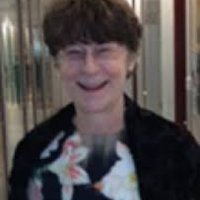
Priscilla Roberts
Read More
Cold War International History Project
The Cold War International History Project supports the full and prompt release of historical materials by governments on all sides of the Cold War. Through an award winning Digital Archive, the Project allows scholars, journalists, students, and the interested public to reassess the Cold War and its many contemporary legacies. It is part of the Wilson Center's History and Public Policy Program. Read more

History and Public Policy Program
The History and Public Policy Program makes public the primary source record of 20th and 21st century international history from repositories around the world, facilitates scholarship based on those records, and uses these materials to provide context for classroom, public, and policy debates on global affairs. Read more


